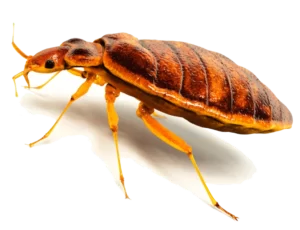About Rat’s entry points

Know the thing
Ants, those tiny yet remarkably persistent creatures, have a knack for finding their way into our homes, no matter how diligently we try to keep them out. Their determination and teamwork often leave homeowners puzzled about how these industrious insects manage to infiltrate their living spaces. SOS Extermination will explore the various ways ants get into houses, understand their behaviors, and uncover practical solutions to keep them at bay.
Way of Entry
1. Cracks and Crevices
Ants are masters at squeezing through tiny openings. They can easily find their way through cracks and crevices in walls, windows, and doors. Even the tiniest gaps around pipes, cables, and utility lines provide an open invitation for these tiny intruders to enter your home. Rat’s entry points
Solution: Regularly inspect and seal any cracks or gaps in the foundation, walls, and entry points. Use caulk or weatherstripping to block potential entryways and deny ants access.
2. Windows and Doors
Ants can crawl through gaps around windows and doors, exploiting loose seals or damaged weatherstripping. Sliding doors with worn-out tracks are particularly susceptible to ant infiltration.
Solution: Repair or replace damaged weatherstripping and ensure a tight seal around windows and doors. Use door sweeps to block any gaps under doors, preventing ants from sneaking in.
3. Attracted by Food and Water
Ants are on a constant quest for food and water sources, and your home is an enticing treasure trove. Crumbs, spills, and food left uncovered are irresistible to these foragers, leading them straight to your kitchen and dining areas.
Solution: Maintain a clean and tidy living space, especially in the kitchen. Clean up spills promptly, store food in airtight containers, and wipe down countertops and surfaces regularly. Denying them access to food reduces their motivation to enter your home.
4. Sweet Scents and Sugary Delights
Sugar-loving ants, like the common odorous house ant, follow the sweet scents emanating from our homes. Syrup, honey, and sugary beverages left unattended are like beacons guiding them inside.
Solution: Store sweet items in tightly sealed containers. Clean up sticky spills immediately, and rinse containers before disposing of them to remove any lingering residue.
5. Decaying Wood and Dampness
Carpenter ants are notorious for nesting in damp or decaying wood. If your home has any water-damaged areas, such as leaky roofs or damp basements, these ants may find their way in to establish colonies.
Solution: Address any water leaks or excess moisture issues in your home promptly. Repair or replace water-damaged wood to discourage carpenter ants from settling in.
6. Hitchhiking
Ants are excellent hitchhikers. They can crawl onto your clothing, shoes, or belongings while you’re outdoors and inadvertently get transported inside your home.
Solution: Shake off your clothing and inspect your belongings before entering your home, especially after spending time outdoors in areas where ants are prevalent.
7. Overhanging Branches and Vines
Ants are skilled climbers and can access your home by using overhanging branches or vines as natural bridges.
Solution: Trim any branches or vines that touch or hang close to your home. Create a barrier between your home and surrounding vegetation to prevent ants from using them as pathways.
8. Vents and Chimneys
Ants can crawl through vents or chimneys and find their way into your home. They might be attracted by the warmth and food sources inside.
Solution: Install mesh screens over vents and chimney openings to prevent ants from entering. Regularly inspect and clean these areas to remove any debris that might attract ants.
9. Electrical Outlets and Switches
Small gaps around electrical outlets and switches can provide ants with easy access to the interior of your walls and eventually your living spaces.
Solution: Seal gaps around electrical outlets and switches using electrical outlet sealers or caulk. This will not only keep ants out but also help with energy efficiency.
10. Plumbing Entry Points
Ants can use plumbing pipes as highways to navigate through your home. They may travel along water pipes, drain pipes, or sewer lines.
Solution: Apply silicone caulk or expandable foam around plumbing entry points, such as where pipes enter your home. This will block potential ant pathways.
11. Pet Food and Water Dishes
Leftover pet food and spilled water around your pet’s dishes can attract ants indoors, especially if the dishes are placed directly on the floor.
Solution: Elevate pet food and water dishes by placing them on trays or stands with water moats. This creates a barrier that ants cannot cross.
12. Garbage and Compost Bins
Ants are scavengers, and they won’t miss the opportunity to explore garbage and compost bins in search of food.
Solution: Keep garbage and compost bins tightly sealed with lids. Rinse recyclables before disposing of them to remove any residues that might attract ants.
13. Crawlspace and Attic Vents
If your home has a crawlspace or attic, ants can find their way in through vents or gaps in the structure.
Solution: Install fine mesh screens over crawlspace and attic vents to prevent ants from entering. Seal any gaps or cracks in these areas.
14. Exterior Lights
Exterior lights can attract insects, and ants might follow these insect trails towards your home.
Solution: Consider using yellow or sodium vapor lights that are less attractive to insects. Position exterior lights away from doors and windows to reduce ant activity.
15. Pet Entrance Doors
If you have pet entrance doors, ants might use them as convenient entry points.
Solution: Regularly clean and inspect pet entrance doors. Consider installing door sweeps or thresholds to block ant access.
By being aware of these additional entry points, you can take proactive measures to prevent ants from infiltrating your home. Employing a combination of strategies, such as sealing cracks, maintaining cleanliness, and using mesh screens, will help keep your living spaces ant-free. Stay vigilant and take action promptly to ensure that these tiny intruders remain outside where they belong.
Ants inside your home or apartment can be a seasonal or year-round problem. Many species of ants build their nests outdoors and become a nuisance when foraging inside your home. Once they have discovered a good food source, they can continue to enter, collect their food, and leave to bring the food back to their outer colony. However, other species of ants get inside the building, build their nest inside, and become permanent interior residents. Some of the most common ant species that can invade and choose to reside indoors are sidewalk ants, carpenter ants, house scent ants, thieving ants, acrobat ants and pharaoh ants. Each of these ants can be difficult to control, but the pharaoh ant is known as one of the most difficult, if not the most difficult indoor ants to control. Unless you live in one of the southern states, outdoor and indoor ants are usually a problem during the warmer months of spring, summer, and fall than during the winter.
How does the building owner or manager control ants
Most building owners and managers agree that ant control is one of their biggest concerns because ants are frequent and persistent. Their perception that there is no single practice or strategy to control all ant infestations is entirely correct. Prevention and control activities often differ for different ant species, ant nest locations, and ant food preferences. As with most other pest problems, using a comprehensive, integrated pest management program yields the best results.
Some important components of a successful ant control program are:
Correct identification is crucial because not all ants are the same. Different species of ants can have very different behaviors, habits, and habitats. Knowledge-based control is one of the most important services provided by your pest control professional. Know where the pest ant is; their activities ; and their likes and dislikes are crucial for effective ant management.
Eliminate and minimize moisture, as ants need moisture to survive, and repair water leaks around pipes and anywhere on the roof. Make sure gutters and downspouts direct rain away from your home.
Keep things clean. Remove food particles from the kitchen and other places where you eat. Keep floors and cabinet tops clean. Don’t leave dirty dishes in the sink overnight. Regularly clean the dishwasher and other appliances. Empty and clean the trash cans. Store foods that attract ants in sealed containers or inside the refrigerator. Don’t forget to inspect where you eat while watching TV because most of us like to snack while watching the show. When grilling and eating outside, be sure to clean the grill and remove any food residue from tables, deck or patio.
Implement exclusion techniques so that ants do not enter your home. Worker (borer) ants enter indoors through holes, cracks and crevices on the outside of the house. Seal areas where wires, ducts or pipes enter the house. Keep tree branches trimmed so they never overlap or touch the house, as ants can use the branches to “hang out” around the house. Since ants lay and follow traces of chemical odors, it is helpful to remove these traces of odors with a damp sponge or washcloth.
Keep ants away from your home by removing or minimizing their hosting sites. Don’t leave anything near you that could provide the protection and humidity the ant colony needs to thrive. Move mulch and landscaping timbers at least 1 to 2 feet from the foundation. Keep ground cover plants thinned out or remove them if possible.
Conclusion
As tiny as ants may be, their collective persistence makes them formidable intruders. You can keep ants out of your home by being aware of the different ways they enter homes and taking preventative steps. Regular inspections, meticulous cleanliness, and sealing off potential entry points will go a long way in ensuring that ants stay where they belong—outside your home.

